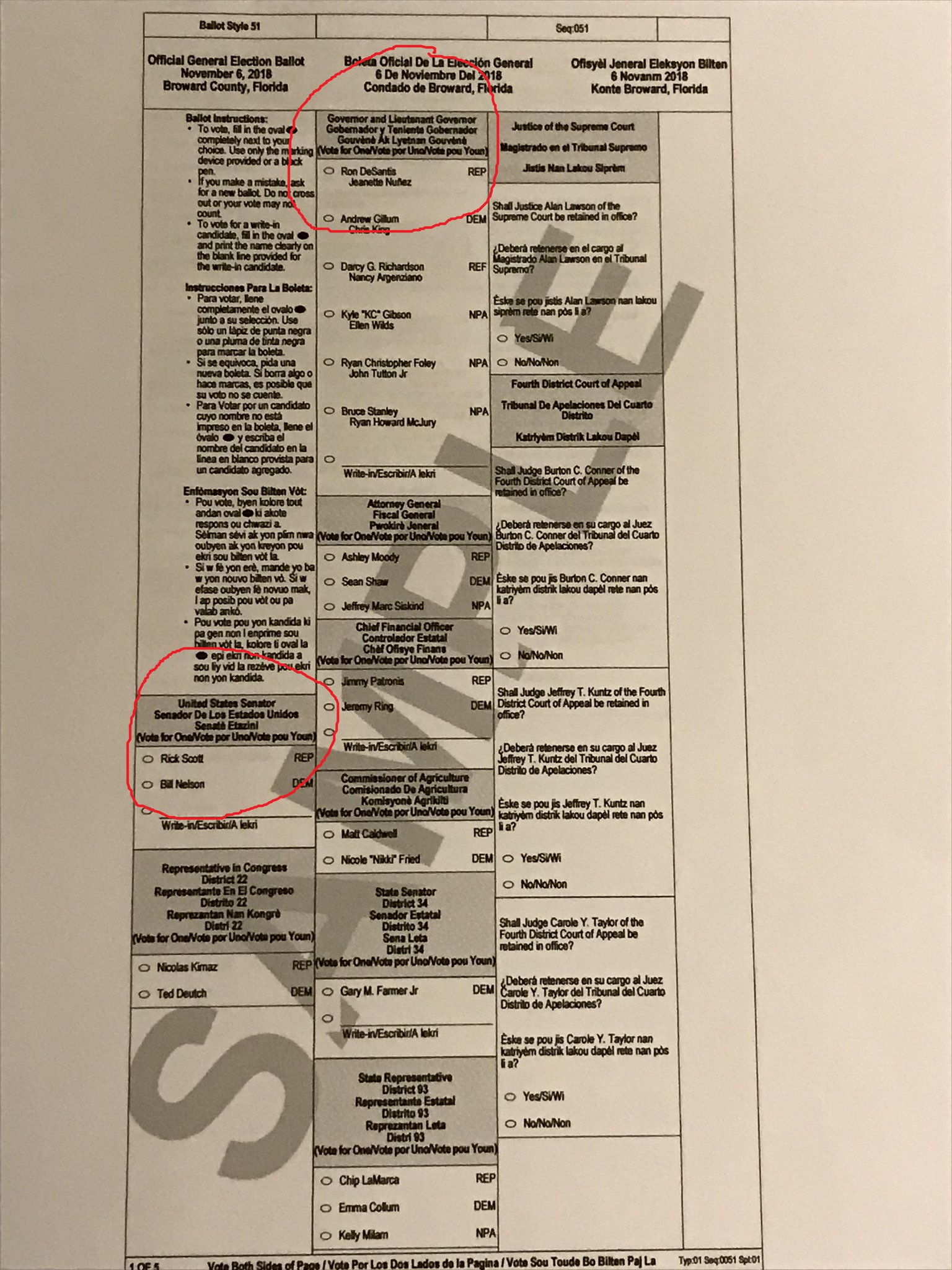While Caligula sent his horse, Incitatus, to the Roman Senate as Consul, Florida sent our horse's ass, RICKHARD LYNN SCOTT to the U.S. Senate, at TRUMP's behest. Did corruption aid in the millionaire's "election," or just incompetence by the Broward SoE and Senator Nelson's campaign staff and lawyers (who would have seen the ballot design before the election)?
Enough flummery, dupery and nincompoopery in Flori-DUH.
Bad ballot design in Broward County cost Bill Nelson 9,658 votes in ultra-tight loss to Rick Scott

A Republican observer looks at a ballot during a hand recount at the Broward County Supervisor of Elections office in Lauderhill on Nov. 16, 2018. Florida Republican Gov. Rick Scott narrowly defeated incumbent Sen. Bill Nelson in the Senate race. (Wilfredo Lee / Associated Press)
A months-long examination of votes from the 2018 midterm election in Florida published Thursday found the way ballots were designed in Broward County could have cost Bill Nelson 9,658 votes in the U.S. Senate race against Rick Scott.
Democrat Nelson, who was seeking re-election, lost the ultra-close race to Republican Scott by 10,033 votes out of 4.19 million cast — a difference of 0.2%.
If the bad ballot design hadn’t cost Nelson those thousands of votes in Broward, Scott still would have been the winner by a razor thin margin — and the contentious contest would have certainly been plagued with even more court battles, counting controversies and conspiracy theories.
The issue stems from the way ballots were designed in Broward County, the most Democratic territory in Florida.
Broward County placed federal races in the lower left-hand corner of the ballot, underneath ballot instructions in English, Spanish and Creole.
Tucked away in the bottom left, many people apparently missed the race — especially in areas in which there wasn’t a hot race for U.S. House of Representatives.
Instead of voting for Senate, peoples’ eyes went to the middle column, which started with the governor’s race
In the state’s other counties, instructions were printed across the top of the page. The federal races — most importantly, the Senate contest — were right on top of the race for governor and impossible to miss.
Immediately after the election, when the results of the close Senate contest were in doubt, election experts quickly spotted the problem.
And even before the study was published Thursday, state election law was changed to eliminate the design used last year in Broward.
The paper published Thursday by the MIT Election Data and Science Lab was written by Michael Morse and Marc Meredith.
Meredith is an associate professor of political science at the University of Pennsylvania. Morse, a graduate of Yale Law school, is working on his political science doctoral degree at Harvard University.
They looked at patterns they found in raw ballot date to figure out patterns across races. The paper said Morse spent months obtaining the data they needed from Florida’s 67 counties.
The researchers said ballot-level data allowed them to use votes cast in different races on the same ballot to figure out whether non-votes, called undervotes, in various races were intentional or unintentional.
Meredith and Morse said 30,413, or about 4.5%, of the 682,409 Broward County ballots in the data they had contained an undervote in the Senate race.
In the other counties for which they had data, 39,922, or about 0.7%, of the 5,406,565 ballots, contained Senate race undervotes.
To come up with the potential net loss of 9,658 votes to Nelson, the researchers assumed people who didn’t vote in the Senate race but voted for Democrat Andrew Gillum for governor would have voted Democratic in the Senate race.
They assumed voters who supported Republican Ron DeSantis for governor would have voted for Scott.
The researchers wrote that they are working on a more sophisticated analysis of all statewide election results to produce “a more rigorous assessment of how many votes Nelson lost to Scott because of Broward’s ballot design.”
Democratic political strategist Matthew Isbell spotted the ballot design issueimmediately after the election. He wrote on Twitter that the MIT analysis was telling, even though the election is over and decided.
“This is amazing! MIT got the actual ballots from Broward and found that those who left the #FLSEN race blank (due to its terrible placement) voted DEM for Gov by a 2-1 margin. Therefore, Nelson could have netted 9K votes” if it weren’t for Broward’s mistake, he wrote.
The ballot design was one of several issues that produced intense scrutiny of and pressure on Broward Supervisor of Elections Brenda Snipes. As the election recounts finished, Snipes said she would retire two years before the end of the term.
Scott, then the Republican governor, pushed her out faster than she planned, and appointed Peter Antonacci to fill the job. After Scott left office and Gov. Ron DeSantis took over, he reached an agreement with Snipes that rescinded Scott’s suspension and allowed her resignation to go into effect.
Anthony Man can be reached at aman@sunsentinel.com or on Twitter @browardpolitics




No comments:
Post a Comment